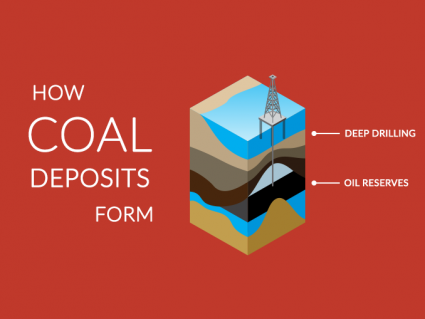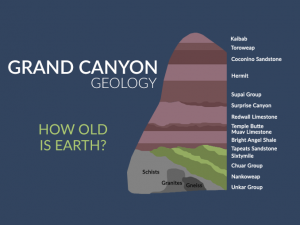Mass Extinctions: The 5 Biggest Dying Events in History

“Mass extinctions are common in nature. Earth has experienced 5 mass extinctions where more than 99% of species that existed are now extinct.”
Time and time again, the reign of a species has fallen with an abrupt ending. Some of the biggest causes of mass extinctions include:
- Ocean/atmosphere chemistry
- Climate change
- Volcanic activity
- Meteor/asteroid impacts
No matter how far back you look, nature has found its way to reshuffle the deck. Large mammals are at greater risk. For example, giant sloths, mastodons, and saber-toothed tigers became extinct only about 10,000 years ago. They just couldn’t find a way to outmuscle nature.

What were the 5 biggest dying events in history?
| Extinction Event | Major Cause | Groups Affected | Time (Years Ago) |
| Cretaceous-Paleogene Extinction (K-Pg) | Asteroid impact at Chicxulub Crater | Dinosaurs (not birds), pterosaurs, plesiosaurs, mosasaurs, and ammonoids | 66,000,000 |
| Triassic-Jurassic Extinction | Volcano eruptions, climate change, and gas hydrate release | Large amphibians, crurotarsans (not crocodiles), insects and conodonts | 201,300,000 |
| Permian-Triassic Extinction | Unstable climate, ocean oxygen reduction, or asteroid/comet impact | Marine invertebrates, land plants, plankton, insects, and all life | 252,000,000 |
| Late Devonian Extinction | Global anoxia (oxygen shortage), forest evolution, and reduced carbon dioxide | Coral-sponge reefs in the tropics, fish, and plankton | 375,000,000 |
| Ordovician–Silurian Extinction | Massive glaciation and sea level drop | Brachiopods, trilobites, graptolites, and moss animals | 450,000,000 |
1. Cretaceous-Paleogene Extinction (K-Pg)

About 66 million years ago, 75% of species became extinct during the Cretaceous–Paleogene Extinction. Rates of extinction broadly swept the land, sea, and air. In the oceans, ammonites disappeared.
All non-avian dinosaurs became extinct. But avian dinosaurs survived because it was birds that descended from theropod dinosaurs. Eventually, mammals emerged as dominant large land animals.
The cause of this extinction event was an asteroid impact which left an impact called the Chicxulub Crater. Also, giant floor basalts aggravated called Deccan Traps.
2. Triassic–Jurassic Extinction (T-J)

The Triassic–Jurassic Extinction occurred 201.3 Million years ago. This extinction event witnessed acid 70-75% of all terrestrial and marine species go extinct.
Although the effects of this extinction were less disastrous, most amphibians were eliminated. In the end of it, dinosaurs were left with little terrestrial competition.
Possible causes include volcanoes and giant flood basalts. From the sudden release of carbon dioxide, climate change amplified the greenhouse effect.
3. Permian–Triassic Extinction (Great Dying)
Earth’s largest extinction event in history killed 96% of all marine species and an estimated 70% of land species, including insects. The Permian-Triassic Extinction was such a devastating event that it had the nickname the “Great Dying” because of its significance.
Actually, it took 30 million years for vertebrates to fully recover. Even the highly successful marine arthropod and trilobite went extinct. There was enormous evolutionary significance in ending the reign of mammal-like reptiles.
It’s difficult to find the underlying cause of the Permian-Triassic Extinction because it happened 252 million years ago. Much of the evidence would have been removed. But the general consensus for the cause of the “Great Dying” is severe volcanic activity, environmental change, and long-term methane release.
4. Late Devonian Extinction (Late D)
The Late Devonian Extinction was less severe than the other mass extinctions. At least 70% of all species went extinct
It occurred 375–360 million years ago at the end of the Frasnian Age and in the Devonian Period. This mass extinction lasted for over 20 million years.
Though opinions vary, the biggest evidence is attributed to global anoxia. The oxygen shortage was possibly triggered by global cooling or oceanic volcanism.
5. Ordovician–Silurian Extinction (O-S)
The Ordovician–Silurian Extinction actually consists of two consecutive mass extinctions. When combined together, O-S is widely considered to be the second most catastrophic extinction event in history.
About 450–440 million years ago, 60% to 70% of all species were vanquished. This included 85% of marine species that died.
The primary cause of the Ordovician–Silurian Extinction is believed to be massive glaciation and sea-level drop. As continental drift carried Gondwana to the South Pole, this locked water into ice caps. Overall, sea levels substantially dropped.
Mass Extinctions: The 5 Biggest Dying Events in History
Mass extinctions are the largest historical biological events. They indicate the disappearance of large numbers of species that have occurred throughout Earth’s history.
Mass extinctions have left enduring marks on the planet’s biodiversity. But at the same time, they often paved the way for the rise of new species and ecosystems, reshaping the course of life on Earth.
Are you learning about mass extinctions and have any questions or comments? Please feel free to contact us below.















And now we understand why we need to leave for Mars…
Very informative…..what proof do we have and how long have we known this….
I love this. I learned a lot about the 5 extinctions. I hope I can make it not be the 6 extinctions
Glad all these folks KNOW so much about this Very Ancient goings on! Really helps me so I can change all this and stop ANY/ALL of it from happening again. Someday, maybe I’ll be real smart like these people, especially Heise who KNOWS SO MUCH!
George Ray Ciseau
Unfortunately, your logic is very weak. Yes, nature did cause climate change in the past independent of humans. But that does not in any way logically lead to any denial of the fact that humans are now causing climate change. On the contrary, the same science that produced and published the information about these climate disasters of the past is the same science that is saying that we are causing them. It is human history that can now cause one such climate change – and is causing it.
yes there were mass extinctions and weather chages.. but over periods of hundreds of thousands of years.. millions of years.. The climate is changing the fastest in recorded history now.. Even by plant/fossil and glacier samples we are literally melting away.. So yes, there is man-made climate change I am afraid.. and it is extremely rapid..
Great news, this proves that the latest trend of blaming mankind for climate change is a lot of rot
the earths climate has always changed and species have always become extinct only to be replaced by other superior species (Darwins theory is very correct)
Now if only we can convince the noisy minority who deliberately twist the truth to push their own agendas of climate doom then our world would be in better shape
Well done. Clearly explained
If the sea levels drop so dramatically that 85% of marine life died when the sea level did come back up there was a whole different life or system in our ocean that’s crazy.
The first extinction was 66 million years ago and fits into the cretaceous period. Which is the most recent major extinction. It also killed 75percent of the species. The second and third extinctions about 200 million and 250 million years ago were the Jurassic and Triassic periods. The Jurassic killed about 70 percent and the Triassic was the biggest killing 96 percent of dinosaurs and animals. The fourth and fifth extinctions were the Donvian and Ordovician periods. About 360 million to 440 million years ago. Both of them killed about 70 percent of there species.